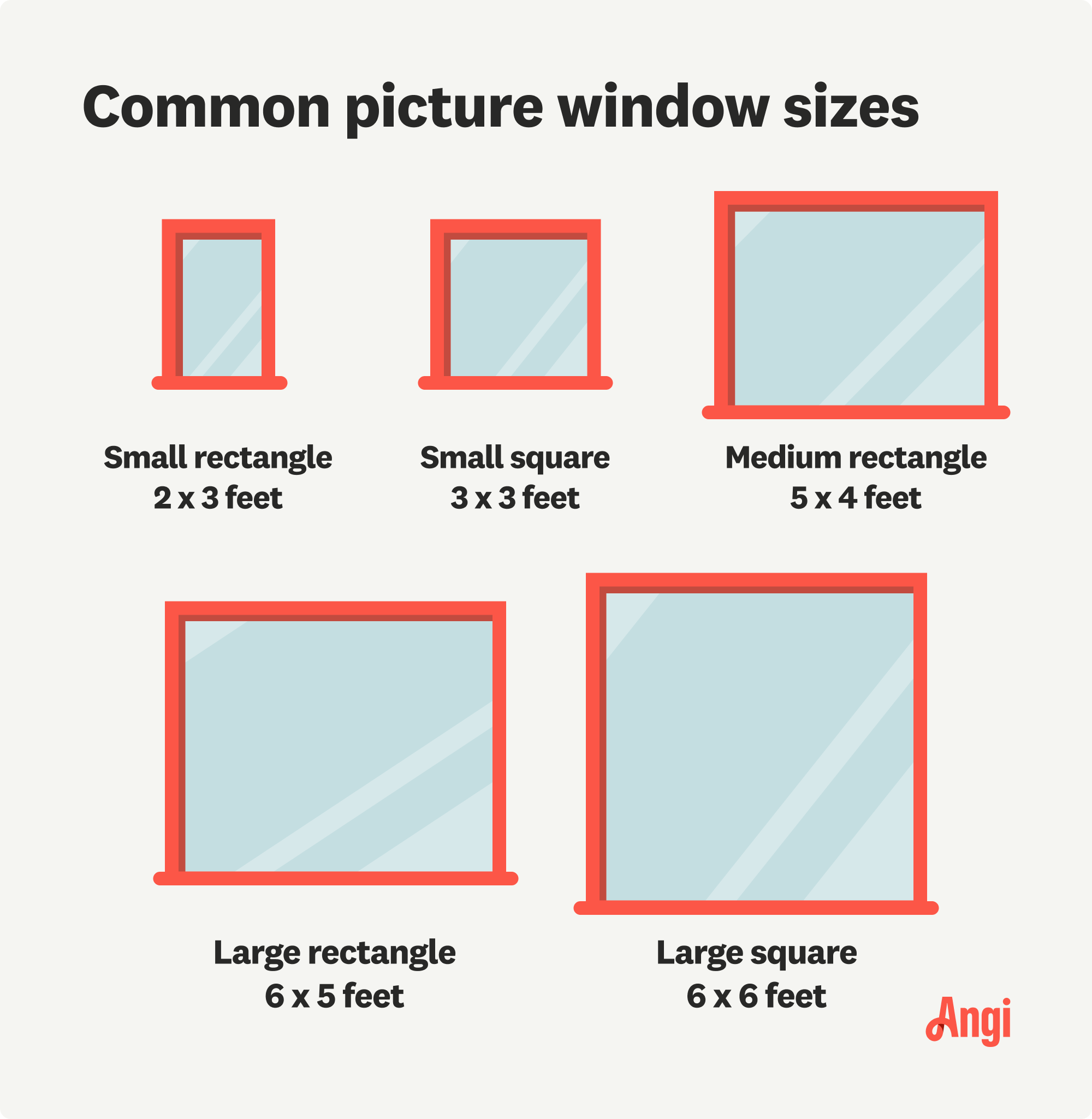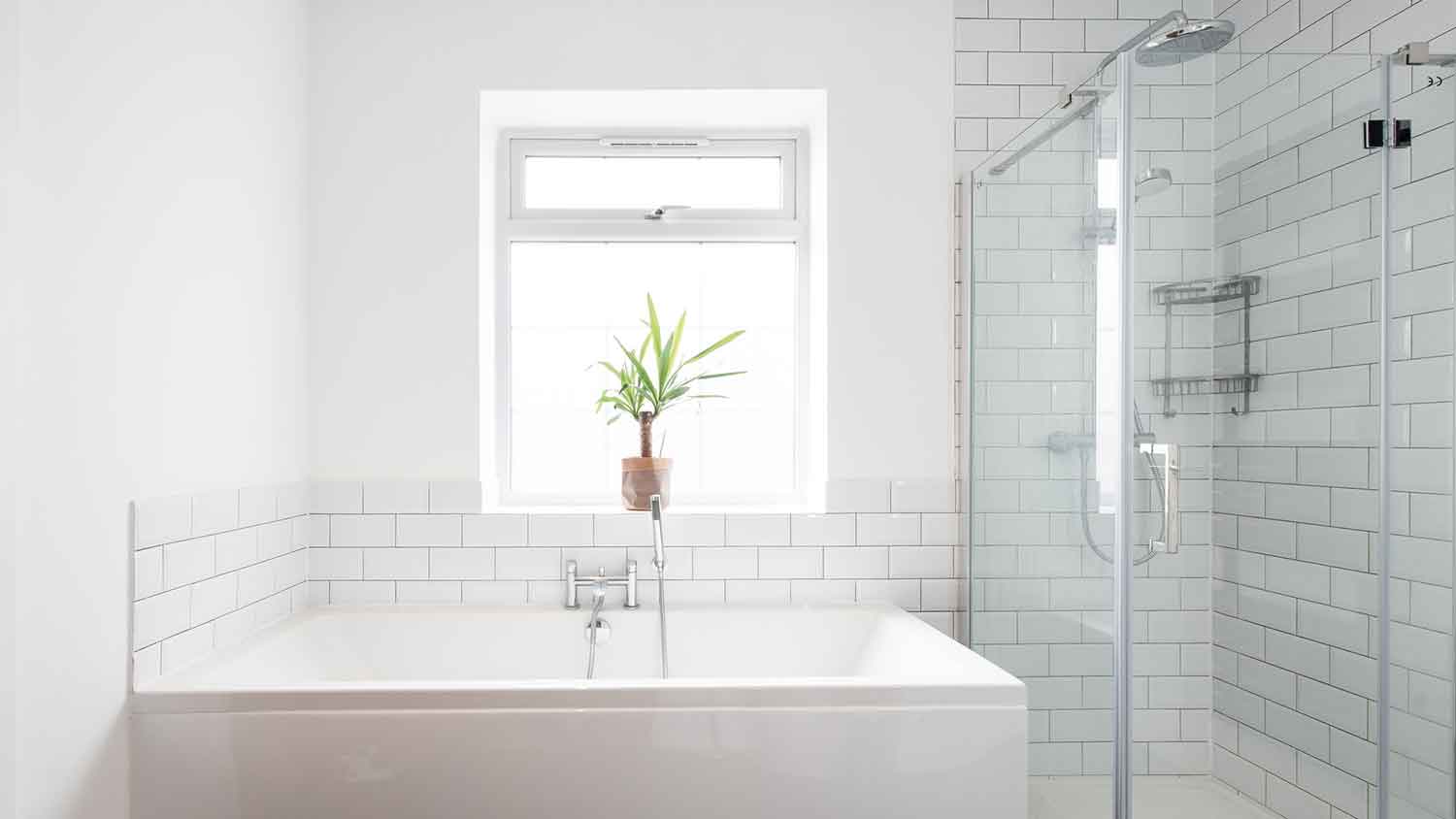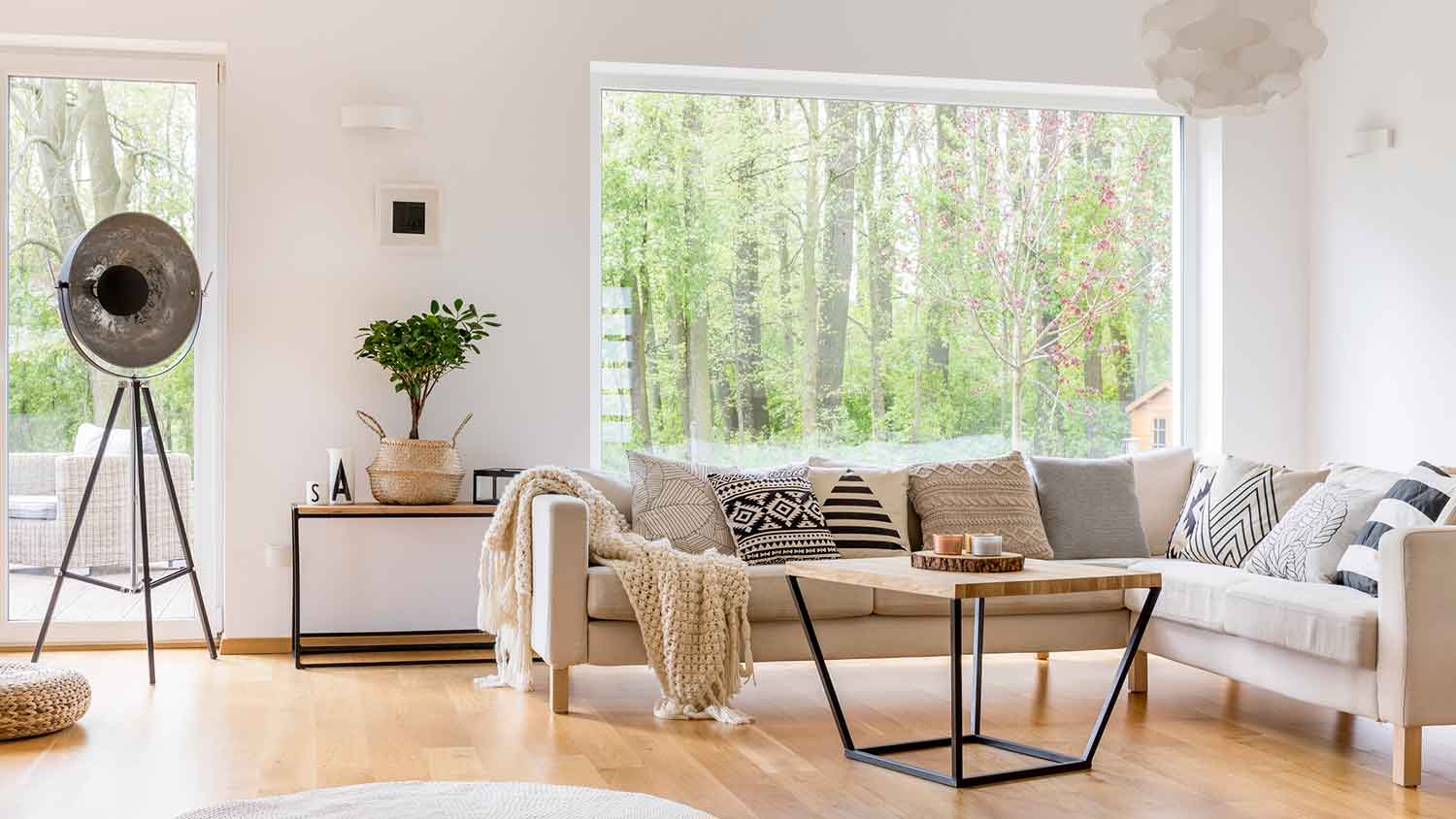Standard Picture Window Sizes: Which is Right for My Home?
Find the picture-perfect picture window for your home


Picture windows come in a variety of sizes for different uses.
Small picture windows can add much-needed light to small, dark areas of your home.
Large picture windows offer a scenic view of the outdoors.
Picture windows are often combined with other windows for a custom look.
Picture windows are a popular way to bring light into your home or showcase the natural scenery outside, but do you know how to pick the right picture window size? Whether you’re looking to illuminate a dark, high space naturally or to simply create a way to enjoy the outdoor view from the comfort of your couch, the right-sized picture window can make all the difference.
What Are Standard Picture Window Sizes?

Because picture windows have such a wide variety of uses, they also come in various sizes. Most window manufacturers make standard window sizes in response to popular demand for those dimensions, and those sizes are easy to find and budget-friendly.
If standard sizes don’t fit the space you’re looking at, picture windows can also be made to fit your custom specifications. These windows don’t open or close, so you’ll be much less limited in size than with single- or double-hung windows. Keep in mind, though, that home picture window sizes max out at 10-by-10 feet because of the weight of the glass. Anything bigger than that will require additional structural support and specialized framing materials.
Picture Window Size by Room
| Room | Height (in feet) | Width (in feet) |
|---|---|---|
| Bathroom | 1–3 | 1–3 |
| Kitchen | 3–5 | 3–5 |
| Living room | 5–8 | 5–8 |
| Two-story foyer | 3–6 | 3–6 |
Bathroom

While it’s preferable to have a bathroom window that opens for ventilation, many homeowners add a picture window to bring in more light, often in or above the shower, along with a similar-sized hopper window. Bathroom picture windows tend to be on the smaller side, making them appropriate for this smaller space.
Kitchen
Installing a picture window over your sink is a great way to brighten up a dark kitchen or enjoy the view while you tackle the dishes. Kitchen picture windows will be limited in size due to factors like counter height and cabinet placement, so these windows are often small- to medium-sized.
Living Room

A living room picture window can be a real showstopper. In larger living spaces, picture windows are often used alongside other styles of windows. For example, a picture window may be flanked by single-hung or casement windows for an eye-catching bay window setup. Picture windows in the living room are large to make the most of the view and fit the room's scale.
Two-Story Foyer
A popular use for picture windows is to brighten up the upper level of a two-story foyer. Depending on the size of the available wall, picture window sizes can vary, but expect to find medium or large windows here since small ones won’t fit the scale of the area.
How to Measure the Right Size Picture Window
To measure your wall for a picture window, you’ll need to measure the rough opening—the size of the hole the window is set into. Rough openings are 1/4 to 1/2 of an inch larger than the actual size of the window on each side, so check with the window manufacturer to see how much extra room you’ll need. Carefully measure all four sides of the rough opening and check to ensure the opening is level and plumb. If the opening isn’t level, you may need additional space so you can shim the window to square it properly.
Your region's building codes may require a specific size and number of windows for a certain room. Areas like basements, bathrooms, and kitchens all have window code requirements. Your window pro can walk you through the details and ensure your project is up to code.
Things to Consider Before Choosing a Picture Window Size
Finding the right picture window size involves a few key factors. Make sure you consider them before diving into a project.
Room Size
First and foremost, you want your window to fit the room's scale. A too-small window in a large room will look out of place and won’t provide the light or the view you’re looking for, and a window that’s too big for a small space will make a small room feel out of proportion.
Configuration
Consider whether you want to install a single picture window or use several windows together to create a unique look for your space. The size of the window or windows you choose will depend on what configuration you’re envisioning and how the finished look will come together.
Budget
Budget is an important consideration when choosing what size window to install. The cost of a picture window will increase as the dimensions do, not only due to the size but also because larger windows may require thicker glass to stand up to the elements.
What to Do if You Have the Wrong Size Picture Window
If your picture window is too small, you have several options. You can cut a larger window opening and install a larger window or install additional windows to give more window space without replacing the original window. With a window that’s too large, you’ll want to hire a local window company since reducing the size of a window opening will involve structural work like reframing the window and replacing siding over the original opening.





- Standard Window Sizes: A Complete Guide to Understanding Window Dimensions
- In Need of Window Leak Repair? Here’s Who to Call for a Leaking Window
- 15 Window Design Ideas to Transform Your Home
- Shedding Light on All the Different Parts of a Window
- 15 Types of Windows and How to Choose the Right Ones
- What Is a Window Well and What Are They Used For?
- 10 Stylish Types of Kitchen Windows to Brighten Up Your Cooking Space
- How Long Does It Take to Replace a Window?
- How Long Do Windows Last and When Should You Replace Your Windows?
- Everything You Need to Know About Hopper Window Sizes











